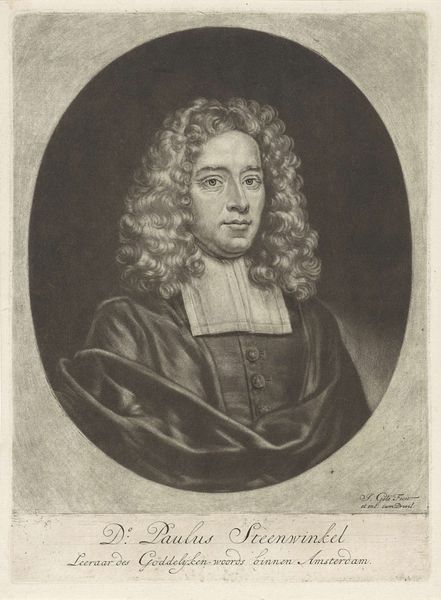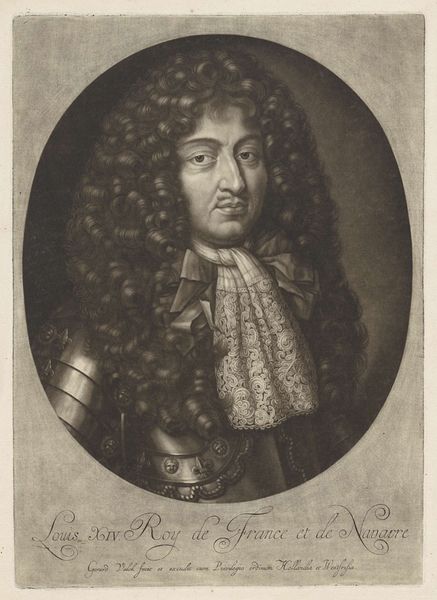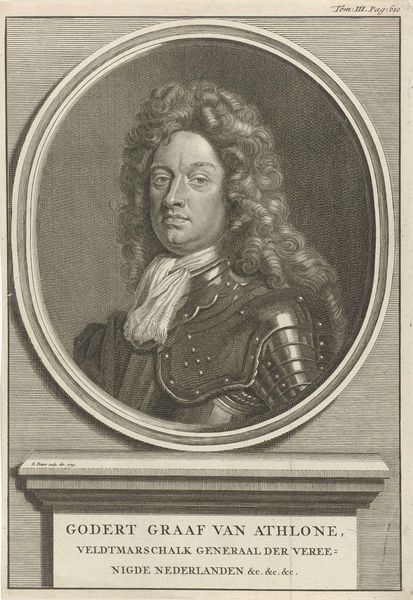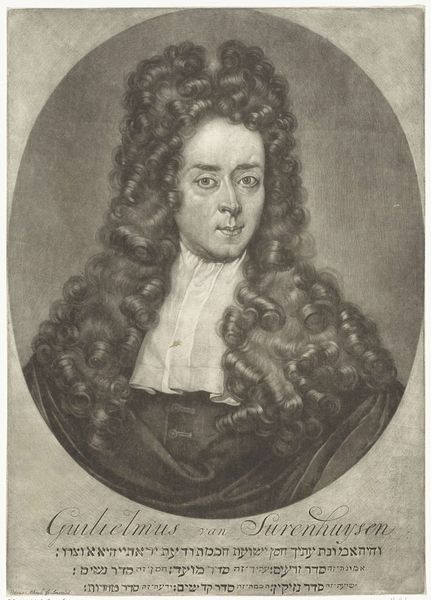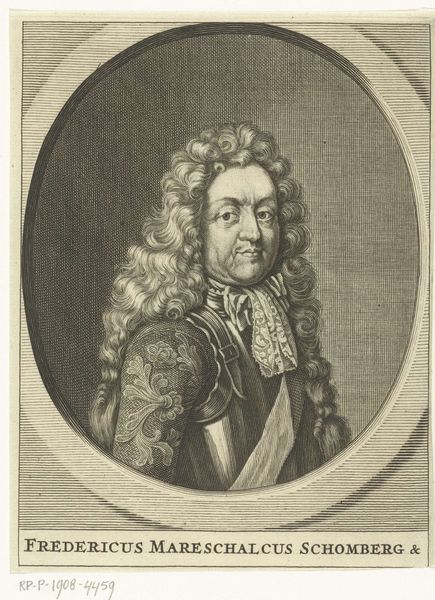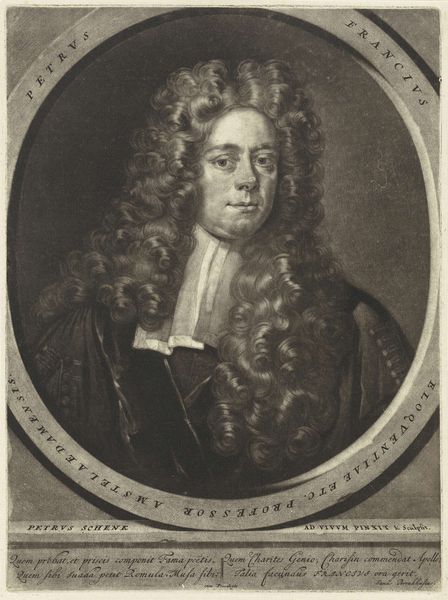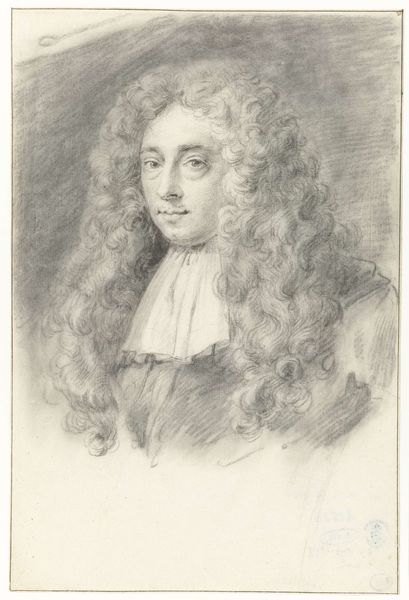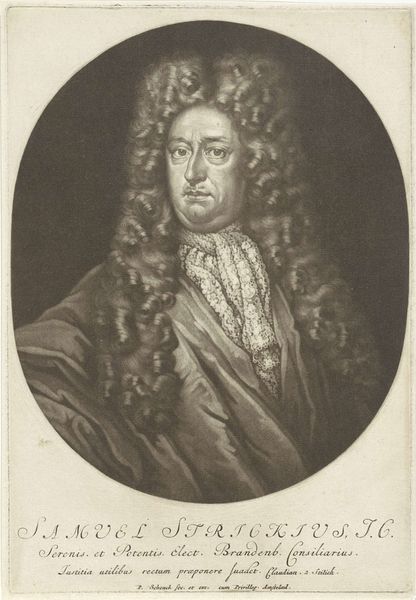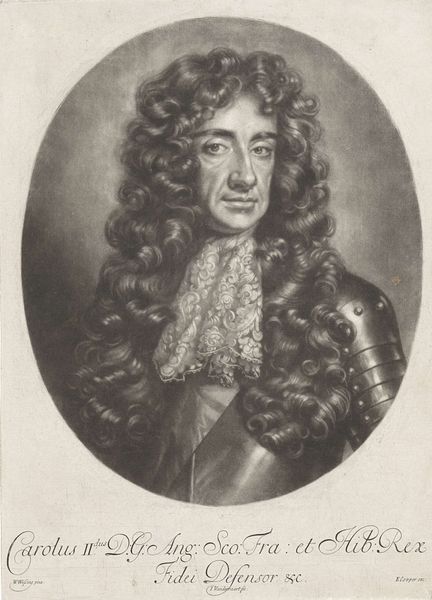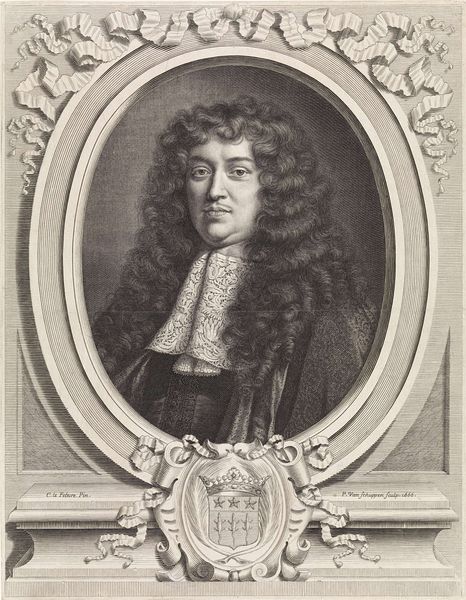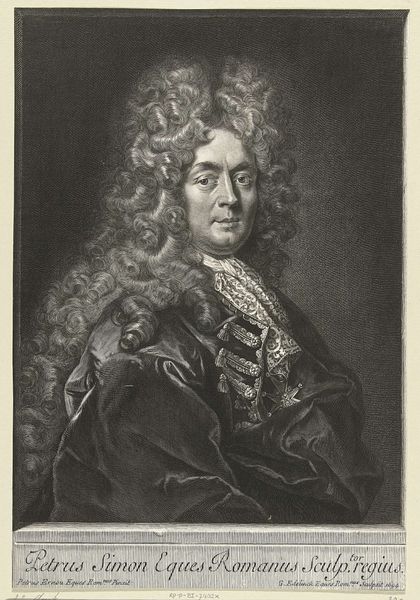
Dimensions: height 129 mm, width 82 mm
Copyright: Rijks Museum: Open Domain
Curator: There’s an almost haunting quality to this print, a delicate sense of detail amidst what seems like a shadowy presence. Editor: I agree. "Portrait of Anthony Ashley Cooper" rendered in engraving from the 1760s, by Jean-Charles François. It is a striking study in light and shadow, wouldn’t you say? Curator: Indeed. It's intriguing how the light seems to cling to his face and the intricate curls of his wig. This recalls how portraits served as conveyors of status, but what emotional narratives were embedded within these prints for the public? Editor: That’s right! It speaks to the period’s understanding of representation. Printed portraits made people and ideals circulate beyond the elite. Think about the very act of creating multiple copies; it's about accessibility and broadcasting power. Curator: The artist’s choices are fascinating. It’s almost as if Ashley Cooper’s identity becomes symbolic—his attire a badge and uniform representing his belonging to English aristocracy, his figure enmeshed in a baroque ideal. Editor: And this particular choice of medium–engraving–allowed for a controlled distribution, creating something between a cultural commodity and a propaganda piece. How else was this visual medium manipulated for cultural memory? Curator: Note how his intense gaze almost feels staged or deliberate. As an Iconographer, I sense there’s a visual strategy at play–something intended to both impress and maybe even subtly intimidate the viewer. Editor: So in a way, by circulating these portraits, they’re attempting to create an air of legitimacy and control in society through manipulating and negotiating his image through popular consumption. Curator: Exactly. It serves as a window into how visual imagery could shape not only perception but collective cultural memory and power structures of the time. Editor: Food for thought, indeed. I appreciate seeing how the visual arts played an active role in socio-political history through this engraving.
Comments
No comments
Be the first to comment and join the conversation on the ultimate creative platform.
